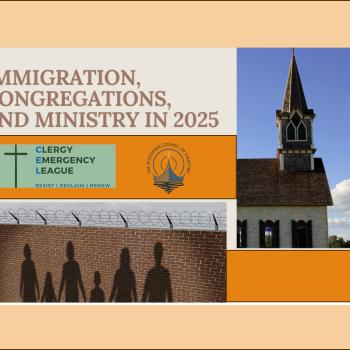It's not accidental, nor is it insignificant, that Easter occurred on a Sunday, the first day of a new week.
Last week, the center of gravity was on the last day, set aside as a day of rest from all that had gone before.
As the sun rises Easter morning, everything changes. The emphasis shifts from what lies behind to what lies ahead of us, from what we have done to what God is doing, from what we have been to what we shall become.
This shift is conveyed in a fascinating term, common in the New Testament but too seldom appreciated today. Jesus is portrayed as "the firstborn from the dead" (Col. 1:18; Rev. 1:5).
In Romans (8:29), Paul pictures Jesus as the firstborn "of many brothers [and sisters]," an image that expands to "firstborn of all creation" in Colossians (1:15). In passing through death and emerging on the other side, Jesus is the older brother, the pioneer of faith (Heb. 12:2), leading the way into a new day, a new week, a new era, a new way of life, a new creation.
In this way, then, Easter celebrates not only the resurrection of one man, but the resurrection of the whole human race. Perhaps this is the full meaning of the term "son of man," so important to the gospel writers: Jesus is the new generation of humanity, a new humanity, Humanity 2.0 (we might say). By proclaiming his resurrection now (not at the end of time), we are inviting people everywhere to join him—in a new birth, as part of a new humanity, celebrating a new covenant, to walk "in newness of life." We are saying, "You don't have to wait for some distant future to start practicing kindness, nonviolence, reconciliation, reverence, joy, hope, neighborliness, and peace. You can leave the old humanity behind and start practicing this new humanity now."
What is the old humanity like? Paul lists its characteristic behaviors: sexual immorality, impurity, doing whatever feels good, idolatry, sorcery, hostility, strife, jealousy, anger, quarrels, dissensions, factions, envy, drunkenness, carousing, and things like these (Gal. 5:19-20). In this list, he echoes a similar list by Jesus: evil thoughts, murder, adultery, sexual sin, theft, false testimony, insults (Mt. 15:19). Taken together, these lists provide a pretty good summary of much of our political and economic status quo; they describe the self-destructive and others-destructive characteristics of a suicidal, consumptive, dying system.
What is the new humanity like? Again, Paul lists its characteristics: love, joy, peace, patience, kindness, goodness, gentleness, faithfulness, self-control (Gal. 5:22-23). And again, he echoes a list from Jesus: poor in spirit, remorseful, humble, hungry and thirsty for justice, merciful, pure in heart, peaceable, willing to suffer for what's right (Mt. 5:1-10).
It is good and right to celebrate the resurrection of Jesus on Easter morning, but even better and greater to choose to affiliate with it . . . to identify with it, to join it, to enter it and let it enter and fill us, to give ourselves to it and receive all it offers us, so we can wholeheartedly participate in it and with it, so that resurrection keeps spreading until everything is healed and everything is new and all is well and all manner of things are well.
The firstborn from the dead does not want to be the only one, but invites us all to join in a contagious and ongoing resurrection.
12/2/2022 9:10:34 PM





